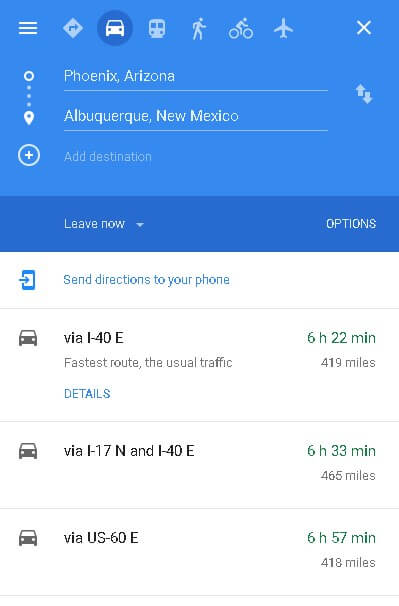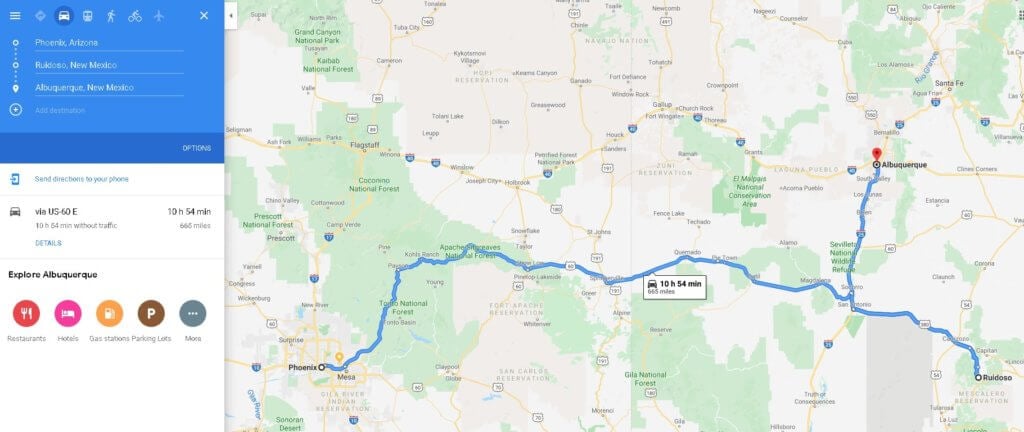https://www.youtube.com/watch?v=XAKx-t0YF5I
I self-booked my first tour a few years back after finishing my first self-recorded/produced CD. I had been playing the Phoenix area extensively the past couple of years and knew it was important for me to extend my reach to find new listeners.
The genesis of my tour began when I was approached by the owner of a coffee house in Albuquerque. He was visiting Phoenix and attended one of my performances. After the show, he asked if I would like to play his place in Albuquerque.
It didn’t make sense for me to drive to Albuquerque from Phoenix for a single show, so I began planning a tour through New Mexico and into Colorado. My goal with this article is to share some of the critical lessons and strategies I learned in the process.
A tour is not just random dates played in various places. I consider a tour a series of coordinated dates with a linear geographic and chronological order. For example — playing an out of town date one Saturday, then a couple weeks in town, then another out of town date, etc. is not what I consider a tour.
ANCHOR GIGS
Anchor gigs are those shows where your relationship with the venue guarantees that you will have a specific date to plan your tour around. Having that date can serve as a bookmark – perhaps the final date of the tour – and helps you visualize or plan the rest of your tour. Once you have an anchor gig, you can work backward and forward from the date and location to find addition towns and venues to play. This is where Google Maps, and other Google tools, come into play.
USING GOOGLE MAPS
Google Maps allows you to create multi-stop maps and flexibly modify a route. It can give you distances and drive times to help plan your routing. And you can store the route in a tour planning document.
I’m going to use an approximation of my small venue tour as an example. At the time I was living in Phoenix. I had Albuquerque locked in for a Saturday. Opening Google Maps, I searched for Albuquerque and selected the “Directions” button. In the example image, you’ll see that a route has been auto generated between Phoenix and Albuquerque.
In the left-column, you can see the two locations. Below the last location, there is an “Add destination” button. This is how we will add new towns. The other benefit of seeing your map visually built on Google Maps is that you can pinpoint potential stops on your route.

I knew I wanted to play a mountain town in New Mexico named Ruidoso, so I added it to my route. By default, it is added to the bottom, but you can simply grab a location with your mouse and move it where it is most logical. For me, to start, I moved it before Albuquerque. And based on the distance, I determined I would play Ruidoso on the Friday night prior to my Saturday show in Albuquerque.
I wanted my tour, where possible, to avoid doubling back and had determined that I would travel South through Tucson, then into Southern New Mexico and up to Albuquerque. I added Tucson and Las Cruces to my map, sliding them in order before Ruidoso. Now the tour was taking a more circular, and in my opinion, logical route. Things were shaping up.
By chance, a songwriter I knew heard about my tour planning and told me I should go to his hometown, Silver City, NM – a small town between Tucson and Las Cruces. I added that destination and slid it between Tucson and Las Cruces. I ended up traveling into Colorado as well. But for the sake of this article, I’ve added Flagstaff, AZ to the map as the final stop before coming home to Phoenix.
SAVING YOUR MAP
In order to save your map – allowing you to bring it back up and edit it if needed – simply put your cursor in your browsers address bar and copy the entire URL into a document. I use Google Docs for this.
The URL will likely be several lines long, but you only need to copy it from your document into a browser and your map will render with all destinations listed. You can then add or delete destinations and change their order, saving the URL again after any edits.
In the same Google Document, I add each destination and a document section. This is where I will add notes about the venues in each city.
I also a rough plan as to when I will play each location. It may look like this:
- Monday (date), Tucson
- Tuesday (date), Silver City
- Wednesday (date), Las Cruces
- Friday (date), Ruidoso
- Saturday (date), Albuquerque
- Sunday (date), Flagstaff

APPROACHING VENUES
I find venues a number of ways. First, Google the city, state, and the words “live music” or “music venues.” Seems simple, right? I also use Indie on the Move, ReverbNation, and Sonicbids to locate venues and events I might not be aware of, or that don’t populate initial Google searches. And when I see other artists playing in a city, I look at their website to see where they may have played in the past.
Important: In most cases, I do not use the above listed sites to contact venues. Instead I go to the venue website or Facebook page to reach out directly. I work to find out who books music and whenever possible, contact them directly via phone or email.
SPECIFIC DATES ARE EASIER TO BOOK
One truth I’ve discovered is that it is far easier to book a specific date than it is to generally ask when you might play. I will, via phone or email, say something similar to:
“My name is Matthew Moran. I’m a songwriter based out of Los Angeles. I’m touring through your area and will be in town on (specific date). I’d like to find out what you need to book me at your venue that night. I’m happy to share music, background, and how I work with you to promote the event. Do you know if that date is open?”
Often, I’ve been able to book a show on the first call. A professional sounding call with a plan of how you will promote the event goes a long way to show you are a serious musician.
If the talent buyer responds that those nights are book or if it is determined they are the wrong type of venue for what you do – either musically or perhaps they do cover acts only – do not simply thank them and hang up. Ask them, “Do you know of other venues in your area that book original acts?”
This can often result in a solid referral. When I first booked Las Cruces, it was at a sports bar. The guy who booked me called me back and said he was concerned that I would struggle to be heard in his bar on the night in question. I asked if he knew of a better fit and he referred me to a bar in old town Mesilla. It turned out to be one of my favorite nights of the tour – both due to people at the venue and a chance to play music with the late Bugs Salcido.
SEND A VERIFICATION EMAIL
Once you book a date, send the booker a confirmation email with the date. You will also send a similar email a week or two prior to you starting your tour. Having run into double-bookings, even after confirmations have been sent, I tend to over-communicate leading up to my shows.
HAVE PROMO MATERIALS
Make sure you have images and posters that can be easily edited as you book venues. You want to be able to send the venue an image for their website, social media, and possibly to print. I also send a few 11×17 posters to each venue.
DON’T FORGET MERCH
At least have a simple t-shirt. Hint: dark shirts sell better than light shirts. I also recommend having a CD – even though they are rarely used. Couple this with a digital download but having a physical product (CD, tape or record), something people can hold onto, is important to stay top-of-mind.
SET REALISTIC GOALS
Making money on a first tour – especially one you book and promote – is almost impossible. My goal was to create a little buzz, win a few new fans, solidify my relationship with the venues, and have fun. I accomplish all of those and more.
CONSIDER COUCHSURFING
I used the website couchsurfing.com in every town except Silver City, where I stayed with a friend of the songwriter who told me play there. My only expenses were gas and food. Also, every person I stayed with came out to see me play and brought a couple friends along.
BE PREPARED TO PLAY
If you do not have a solid set, do not plan a tour. For me, this means an hour plus of music – fully rehearsed and memorized.
CONCLUSION
Planning and executing a tour should be exciting – not an anxiety-filled endeavor. Consider some of the above tips as a way to make the process more productive and more enjoyable. And the final pro tip: be sure to bring quarters for laundry and water for the ride.
ABOUT THE AUTHOR
Matthew Moran is a songwriter, performer, author, podcaster, and technologist based in Los Angeles. He performs solo shows and with his band, Arrogant Sage. He often provides workshops to business groups and musicians on content marketing, collaboration, and useful technologies. You can find out more at MatthewMoranOnline.com.
Man photo credit: “Alongside @ Planet Festival Tour” by Freakshot Photography is licensed under CC BY-ND 2.
